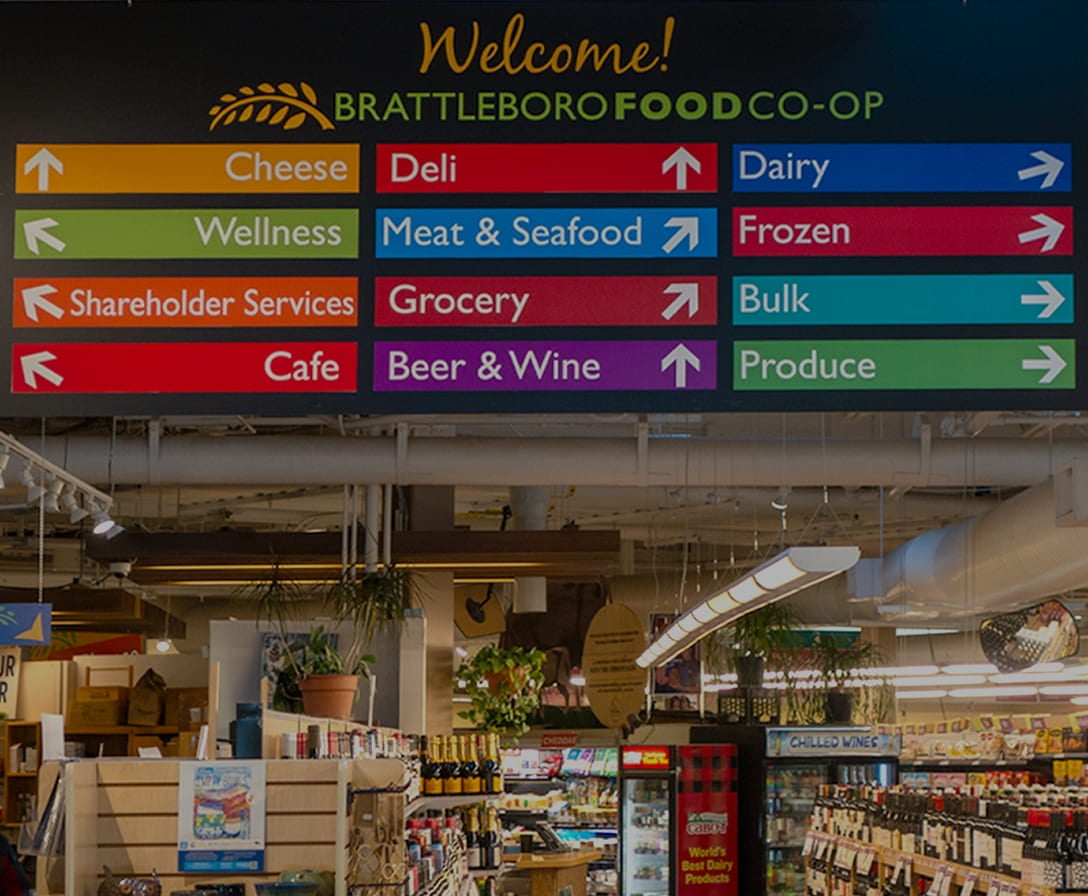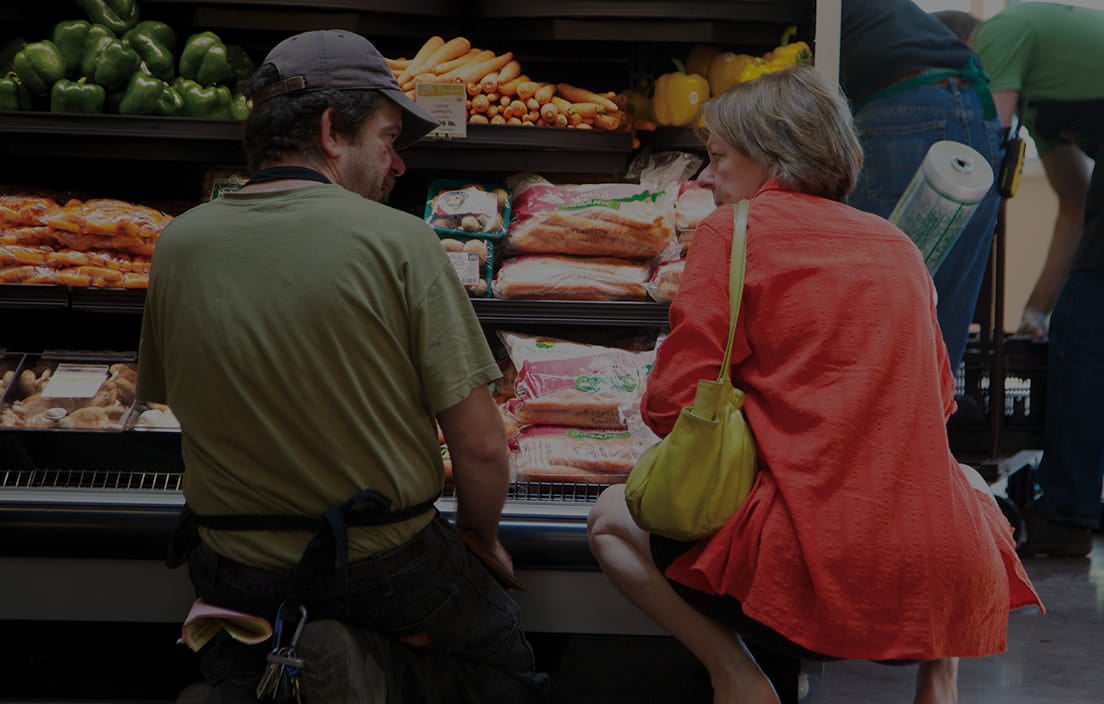Grateful Greens
Just off Main Street in Brattleboro, VT, a farm called Grateful Greens is growing nutrient-dense greens in what was an unused basement and office facility. It’s an amazing concept built on the goal of creating a more sustainable and resilient food system. This dream is made possible by founder James Mayer’s can-do attitude plus his experience with the use of highly efficient indoor farming techniques. It has also been brought to fruition through investment, property, and knowledge from the folx at Delta Vermont. This extremely successful farming model is in the early adopter phase and with proper planning, use of renewable energy, and expansions, it could become something that truly brings to us a more secure local food system.
So how are they farming indoors? Through solar power that electrifies all parts of the growing process and, most importantly, the high efficiency LEDs that provide the light required for growing. These lights even have a night cycle which is extremely important to the growth of plants and food, and the greens get approximately 6 to 8 hours of darkness. Grateful Greens starts by acquiring excellent seeds from High Mowing Organic Seeds and Johnny’s Selected Seeds, which are planted in organic soil from upstate New York. Sunflower, amaranth, and radish greens are preferred, with sunflower greens being the most prevalent seller and the core of their business. Over many years of trial and error, James identified the ideal soil structure, and the soil is regularly tested for just the right nutrient content for the growing process and to optimize how the plants respond themselves. Watering needs are accomplished through a mostly automated system that utilizes float tanks to disperse water. While they do use town water, a reverse-osmosis system is in place for proper filtration. All these plants then live in custom-built wooden structures called grow towers that allow for this vertical-farming approach to happen in a small space. It takes a total of 12 days to grow most of their greens, and based on growing cycles, they are planting new seeds twice a week. All greens grown at their indoor farm are 100% organic and USDA-certified organic. James emphasized that one of the most important elements of their farm is the music they play for their greens. After reading and researching that music can impact a more balanced and beautiful growth cycle, they have a calm song of French origin playing on a loop in their growing room.
The inception of Grateful Greens dates back five years to when James graduated college and realized that his degrees in software engineering and marketing were not the path toward his own happiness. He moved back in with his mom in Stephenstown, NY, and while soul searching found a YouTube video about a guy doing indoor vertical farming in a spare room and growing thousands of dollars’ worth of greens. Inspired, James started experimenting, growing his own greens with some shop lights in his closet, and quickly had hundreds of dollars’ worth of greens ready to eat. He rushed to visit restaurants and co-ops in the Albany region to see if they were interested. Honest Weight Co-op was the first place that sold Grateful Greens. Once Honest Weight was on board, he expanded to his entire room and continued to increase his yield and customers. Within the first year of business, he became overwhelmed with what ought to be his next steps to manage growth. Instead of continuing he paused and took a job with Delta Vermont, a Brattleboro-based organization investing in the revitalization of properties, business incubation, and energy efficiency. While working at Delta Vermont, James became familiar with their business incubator program. Grateful Greens was still a deep passion of his and, needing funding, he packaged up a presentation and pitched it to the owner, Bob Johnson. Bob took a serious liking to the concept of indoor farming and its goal of creating a more local and secure food system. He invested money and offered up the current location of Grateful Greens, transforming a dusty old space into an amazing indoor farm.
Most orders are picked and processed within a day of when the distributor will be picking them up. The freshness of their greens is second to none and they are a great compliment to sandwiches, pizza, smoothies, or salads. The sunflower greens and radish greens are harvested with a machine that has a motorized blade and that cuts just above the level of the trays in which they grow. James and two part-time staff hand cut all of the amaranth. Of the three greens, the sunflower grows an inedible hull, which they remove with a jostling tool created and handmade by James. The greens are loaded into the circular metal and mesh jostling tool, which is then spun to remove the hulls. The amaranth and radish do not require any additional processing and are more complimentary greens. You can purchase either the Sunflower Greens on their own in a 3- or 16-oz. package, or in a 3- or 16-oz. Unity Mix, which incorporates all three greens. Please note that you must special order the 16-oz. size on our website or in the Co-op. Speaking of packaging, they offer fully plant-based packaging that is biodegradable—including their stickers, bags, clamshell packages, and even the tape on their boxes. Currently their crops are available throughout Vermont, New Hampshire, Massachusetts, and eastern New York. The distributors they work with include Black River, Marty’s Local, and Food Connects, and they do some shipping on their own as well.
Grateful Greens has exhibited great success with a highly effective and efficient process of growing greens. Sales are picking up and they just hired a new staff member to handle the additional relationship-building and account management with new stores. Automation and more technology will bring even greater possibilities. For instance, the farm requires a more fine-tuned automated harvesting and processing system, which, James stated with a big smile, is very close to happening. Additionally, they dream of collecting rainwater, filtering it, and automatically feeding the plants in order to reduce water consumption. Through these innovations, they feel there is even more potential for growth because of a less labor-intensive work process and the reduction of natural resources. Lastly, a food-access program has been implemented because their pricing does not make their products accessible to organizations such as schools, hospitals, and prisons. They have bigger dreams of creating a food-access fund and they hope to launch that soon. With a collective goal to feed more people nutrient-dense greens, both Grateful Greens and their distributors can lower pricing and support students being able to enjoy them. Overall, expansion to a new location is coming for Grateful Greens as they seek to deepen their economic and local food system impact on a potentially large scale. Try their Sunflower Greens or Unity Mix next time you shop!
By Jon Megas-Russell
About Producer of The Month

Shop Online

On Sale Now!

